The Google Pixel 4 XL Review: Stuck In The Past In 2019
by Andrei Frumusanu on November 8, 2019 11:30 AM EST- Posted in
- Mobile
- Smartphones
- Pixel 4
- Pixel 4 XL
Display Measurement
The display of the Pixel 4 is one of the phone’s main features thanks to the 90Hz refresh rate. As mentioned in the introduction, the displays on the Pixel 4 series this year is again dual-sourced between LG and Samsung. The regular Pixel 4 receives an LG panel, while the 4 XL that we’re testing and reviewing today, uses a Samsung display.
Android Q promised to have implemented a new iteration of Google’s colour management system, and for the first time, the Photos app is actually able to properly display wide gamut pictures. Unfortunately, it’s still a very limited system in apps as they cannot display differing gamut pictures side-by-side, so for example the thumbnail view is shown only in sRGB. Most importantly, Chrome by default still doesn’t support wide-gamut content as you have to force it in the engine settings, and this implementation doesn’t use the OS’s CMS handling.
We move on to the display calibration and fundamental display measurements of the Pixel 4 XL screen. As always, we thank X-Rite and SpecraCal, as our measurements are performed with an X-Rite i1Pro 2 spectrophotometer, with the exception of black levels which are measured with an i1Display Pro colorimeter. Data is collected and examined using SpectraCal's CalMAN software.

Starting off with the brightness, the Pixel 4 XL is relatively conservative as it peaks out at 438 nits in all scenarios. It’s again very odd here as Google can’t seem to make up its mind on whether it wants to offer an auto-brightness boost or not. Last year, the Pixel 3 only had it available in its Adaptive mode, whilst this year the Pixel 4 doesn’t offer it all, even though the display drivers actually has the high-brightness mode implemented.
In terms of greyscale calibration and accuracy, on my unit things differed greatly based on brightness. At maximum brightness, the Pixel 4 XL was seemingly quite accurate with good colour balance and gamma reproduction. At our standard 200cd/m² measurement point however, things are quite worse. First off, all there’s a more notable colour shift towards greens on the unit which isn’t great. Following that, there’s also creeping issues with the gamma calibration as it’s non-linear and deviates a lot more from the 2.2 target. What this results in is some shades, especially at the higher levels, appear darker than they should be.
I’ve also noted and captured some sort of bug in the display behaviour; when I was measuring at minimum brightness, I encountered some really bad results. I’ve seen this mentioned by some other reviewers and the issue went away when I toggled the screen refresh rate. The odd thing though, is that I wasn’t able to immediately reproduce it afterwards and results on the new measurements were quite ok. The colour shift the phone took was extremely noticeable at the time the bug took place.

SpectraCal CalMAN
"Natural" Greyscale colours

In terms of dE2000, the biggest culprit to the average 2.29 result for me is the green tint of whites as well as the slightly off gamma.
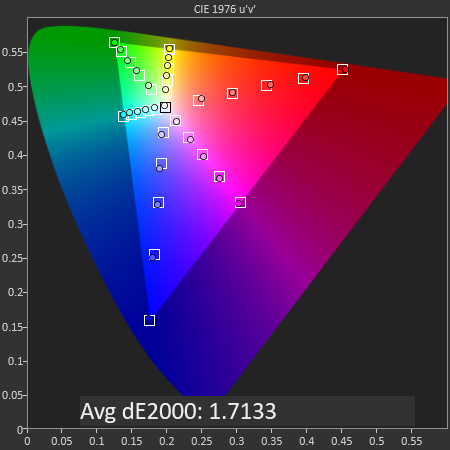
SpectraCal CalMAN
sRGB Gamut
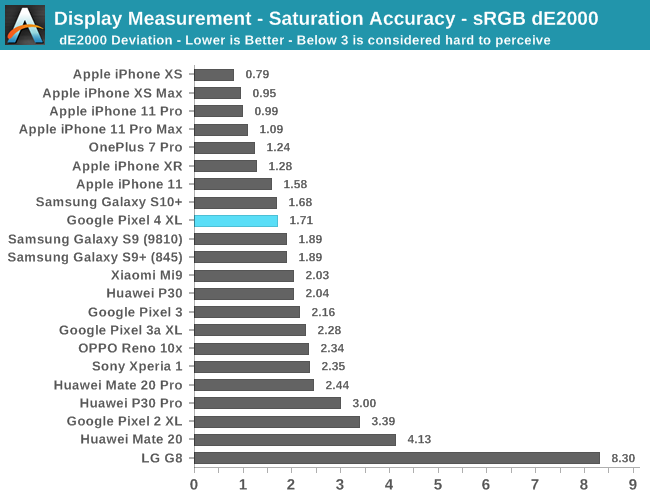
In the sRGB gamut, the Pixel 4 XL does well with a dE2000 of 1.71. The biggest issue again is a shift in the tones towards green, but also seemingly very slight oversaturation of all the tones.
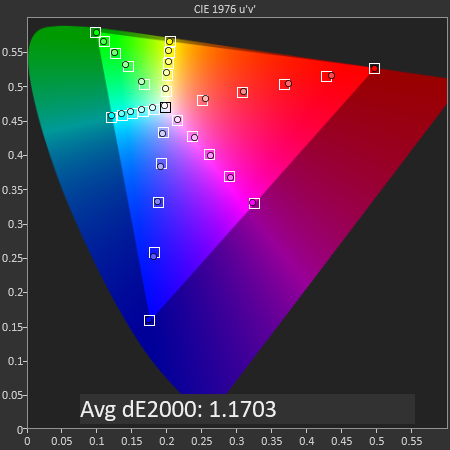
SpectraCal CalMAN
Display P3 Gamut
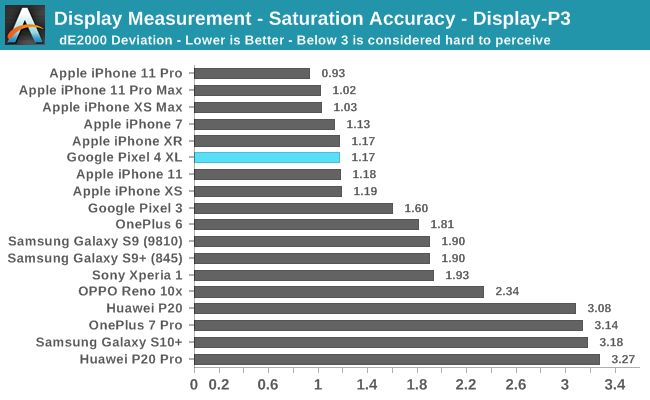
The Display P3 gamut performs a lot better. Here while the green tint is still present, the saturation levels are better and thus the Pixel 4 XL ends up with an excellent dE2000 of 1.17.

SpectraCal CalMAN
Gretag-Macbeth

Finally, in the GMB test, the Pixel 4 XL ends up quite average with a score of 2.34 as it’s showcasing tones that are too dark, a green tint in the whites, with some hue errors for a few tones.
Display Conclusion – Good, but not A+
Overall, the Pixel 4 XL’s display characteristics beyond it’s 90Hz refresh rate are quite average. Whilst Google has been able to improve the calibration compared to what we measured on the regular Pixel 3 last year and the 2 XL the year before that, it’s still quite a bit behind what some other vendors are able to achieve. The display’s lower brightness is also a bit of an issue in direct sunlight as it lacks any kind of boost behaviour. Finally, the remaining characteristics such as viewing angles and sharpness are excellent, but that’s just generally a common characteristic of panels with these specifications.
The results today aren’t really a surprise to me given Google’s track record with the displays on the Pixel series, however it does stand in contrast to what the company was proclaiming at launch: “A+ rating Best Smartphone Display Awards” really doesn’t mean anything at all if, first of all, it’s a sponsored award, and secondly, if the measurements aren’t representative of a random production unit. Make of it what you will.


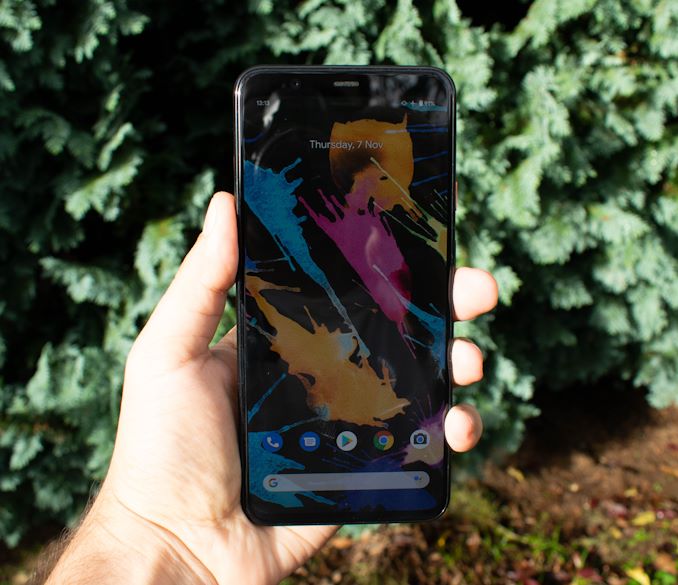
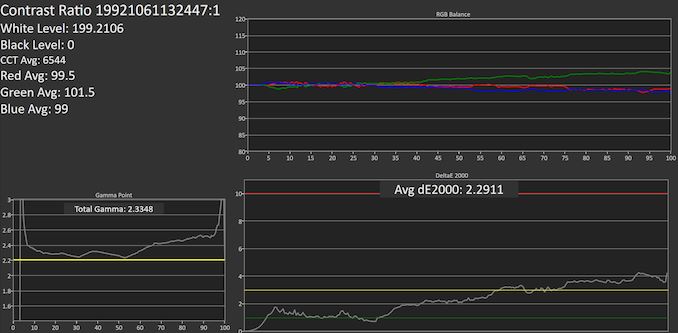
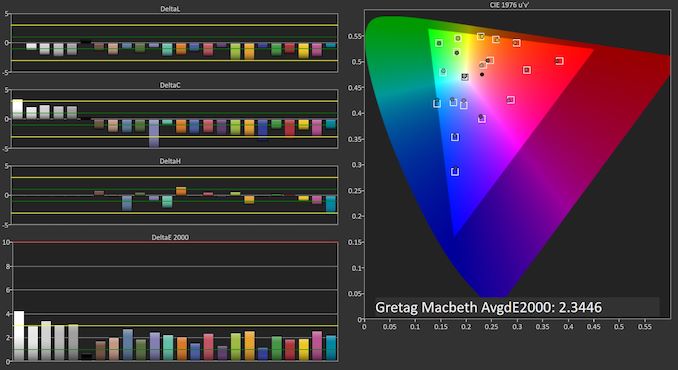








159 Comments
View All Comments
warreo - Friday, November 8, 2019 - link
Not trying to be politically correct or anything, but the "schmuck" bit about wireless earbuds is a bit unnecessary even if it is tongue in cheek. I've got a pair of Jabras I got on sale (you don't have to spend a "heavy premium") and the experience has been completely freeing compared to even the wireless cans they replaced. Not saying they're for everyone, but the popularity of Airpods and true wireless earbuds clearly shows they have massive appeal to many.I'll get off my soapbox now.
Andrei Frumusanu - Friday, November 8, 2019 - link
> I've got a pair of Jabras I got on sale (you don't have to spend a "heavy premium")$100-150 is a very high premium for the sake of having audio. I'd argue the popularity of Airpods are very much less about wireless audio and more about them being style and status symbols.
generalako - Friday, November 8, 2019 - link
And the fact that most flagship phones don't have headphone jacks, so people are "forced" into buying them.Spunjji - Monday, November 11, 2019 - link
I will never stop thinking that "true wireless" earbuds are a terrible idea. Even laying the physical issues of losing them or the case aside, you're charging a small battery to charge two even smaller batteries through induction, so the overall power efficiency is *terrible* and they're guaranteed to be e-waste within 4 years at the very most.s.yu - Wednesday, November 13, 2019 - link
The only way to fix this is to be able to service the batteries yourself. I could do that to my Philips Sonicare now and it could last many years to come until spare parts cease to be available but I reckon the earbuds are a lot more difficult.Quantumz0d - Friday, November 8, 2019 - link
This phone is DOA.- No 3.5mm jack, "Made for Google" Apple copy bs
- No SD slot
- 4K 60 nope, No high FPS capturing either.
- No Wide angle (It's funny when LG did this for 2016 and up no one batted an eye but when Apple does this its a ground breaking innovation. Also Pixel ia over as Huawei is too good (Which is really sad given its coming from a State funded corporate CPC stooge)
- No UFS 3.0
- No 256GB base like Note 10+ nor base 128GB
- 6GB bog standard RAM, in 2016 OP3 had 6GB RAM.
- Google and all are praised for camera but no one reviews the Manual / Pro camera modes. A big sham that we don't get any of them on Pixel or iPhone but they are touted Best. Especially when LG and Sony break the mold with Manual/Pro Video settings (Siny just started with Xperia 1 while LG was doing since V20.
- Pathetic battery.
- Weak construction, Jerryrig tests failed, even that shitty paint is cheap feeling.
- Propreitary System UI, uses AOSP only in name but Google slowly killing all of the OSS components into Pixel experience a massive shame.
- Scoped Storage Bullshit (Android 10 bonus) a.k.a Death of Filesystem access.
- Huge Forehead over rounded design, My V30 has much smaller bezela over this POS.
- Pixel 4 has Huawei type Read Only Filesystem. EXT4 is RO in this crap making Custom ROM scene a pain. Like Pixel 3 Dynamic Partitions (P4 adds this too) and they also have A/B slotting BS, what does this mean ? - Multiple flashing of TWRP, Zips, need to change a lot of things as traditional mod flashes won't work.
The only good thing is Fastboot OEM unlock Bootloader unlock without any Code drama.
Quantumz0d - Friday, November 8, 2019 - link
No HDR as display is crap in 2019. My V30 clocks at 600Nits from 2017. And from S8 too.No USB Video Out too. A massive shame as OP, Samsung, LG, Sony, Huawei all have it.
This phone is crap.
Quantumz0d - Friday, November 8, 2019 - link
Also forgot to add the lack of proper fingerprint scanner and add that Face ID clone. Google Rick Osterloh doesn't have any shame and their lead designer lady is stupid as well.Andrei Frumusanu - Friday, November 8, 2019 - link
It does have HDR.Quantumz0d - Friday, November 8, 2019 - link
Andrei thanks for reply. But isn't the HDR requirement at 500Nits optimum ? I see its maxing at 438 which is pretty poor esp in 2019. Also HDR10 is advertised on Samsung panels for a long time. Even LG from V30 onwards. Also same for Dolby Vision.